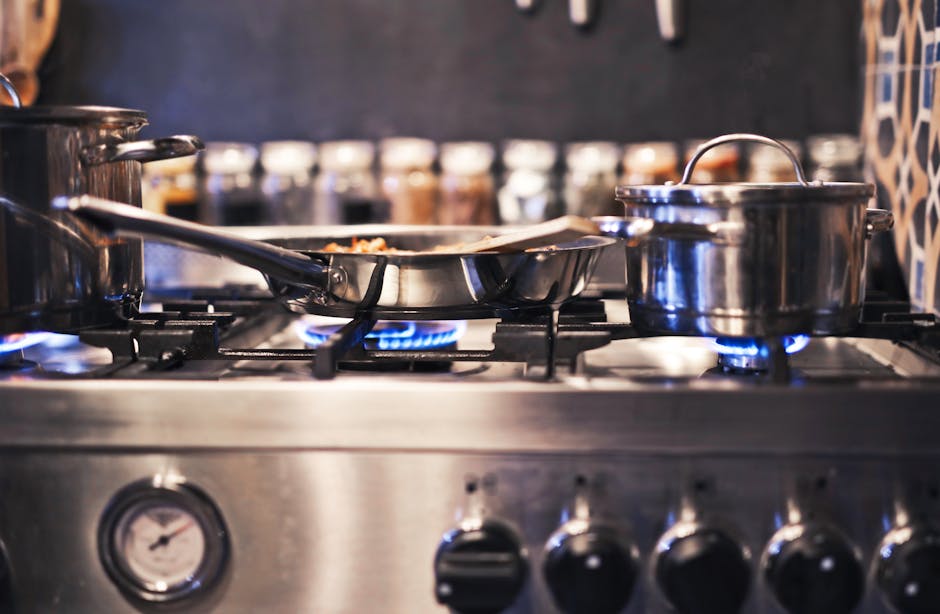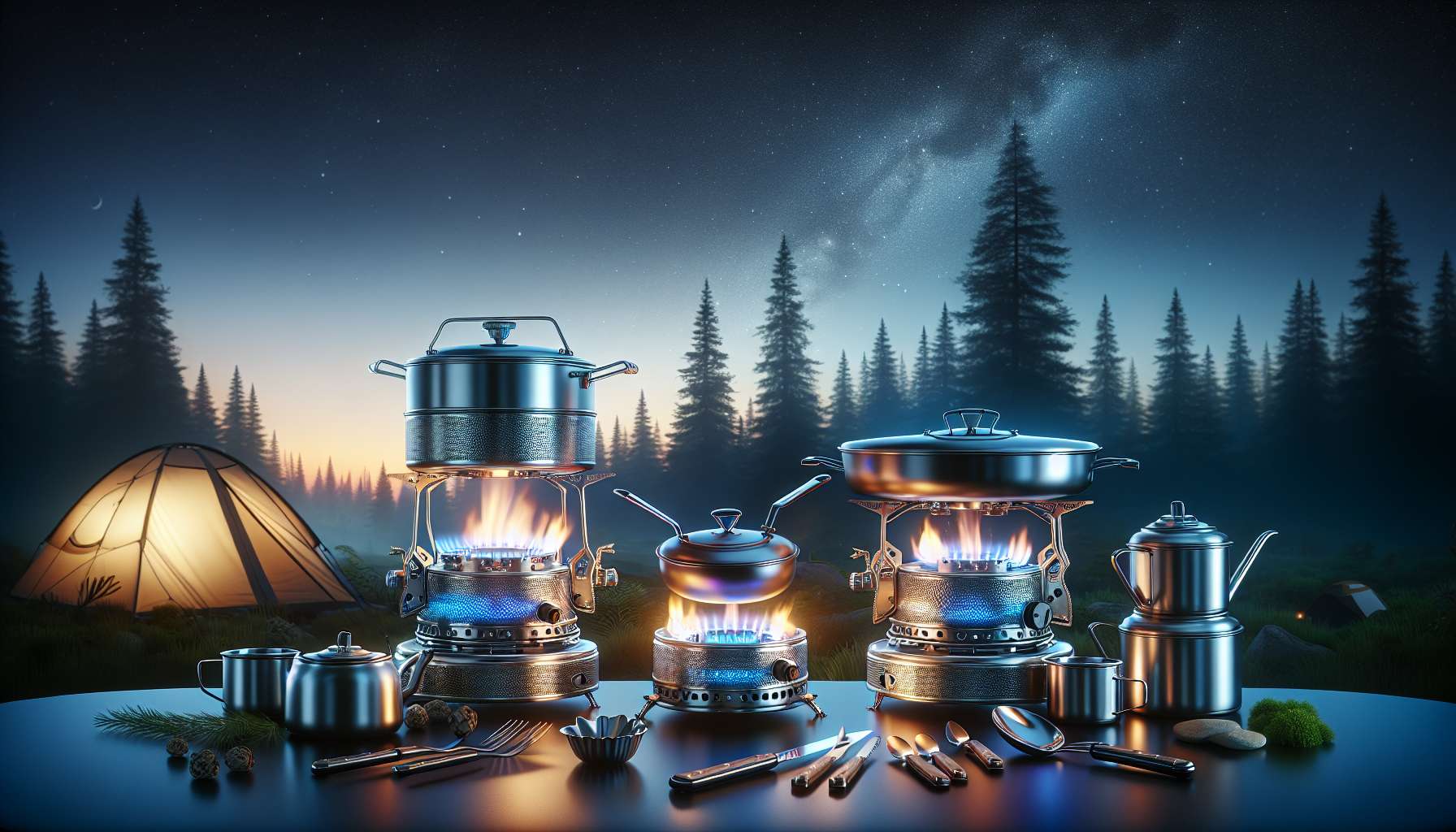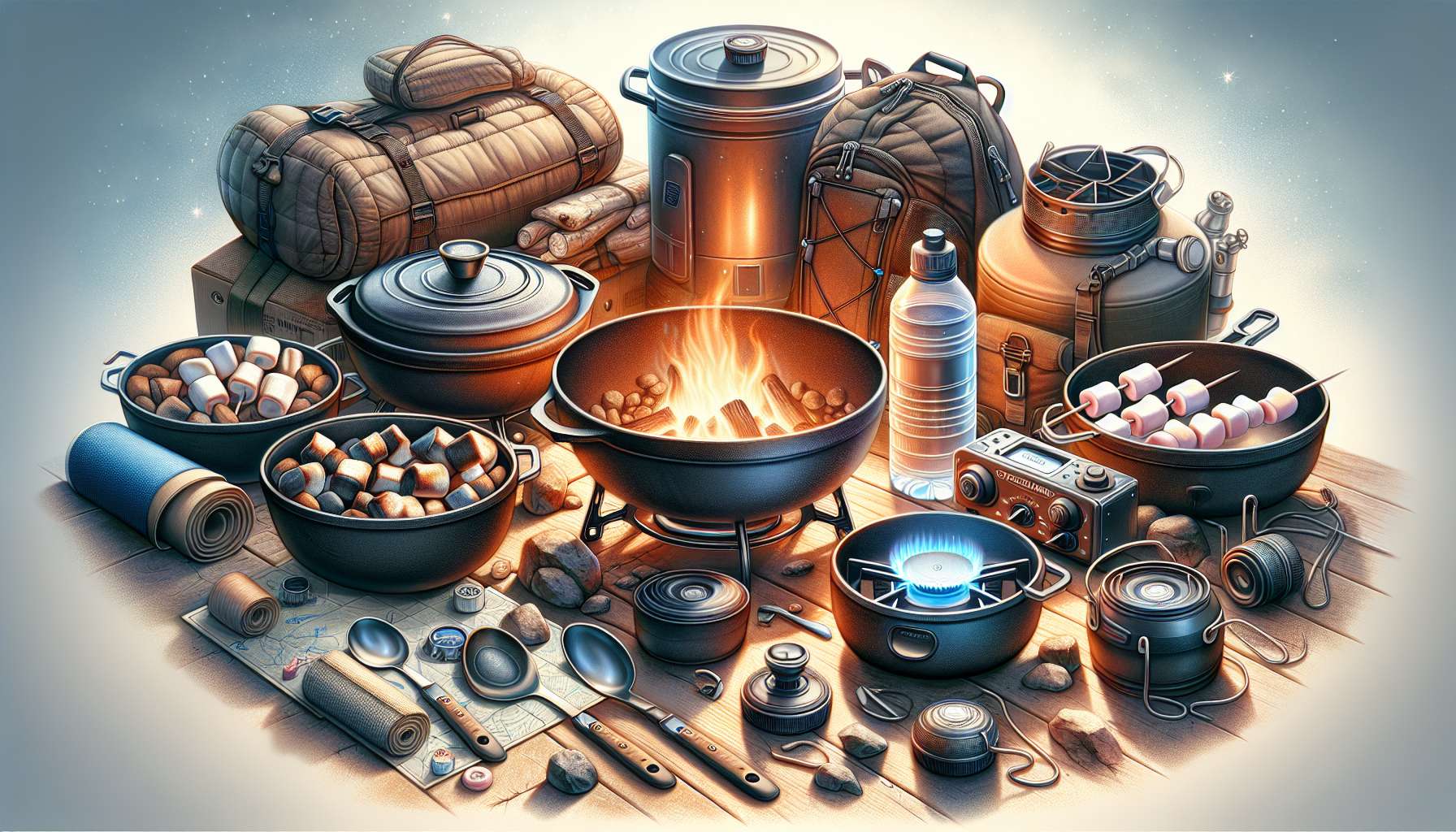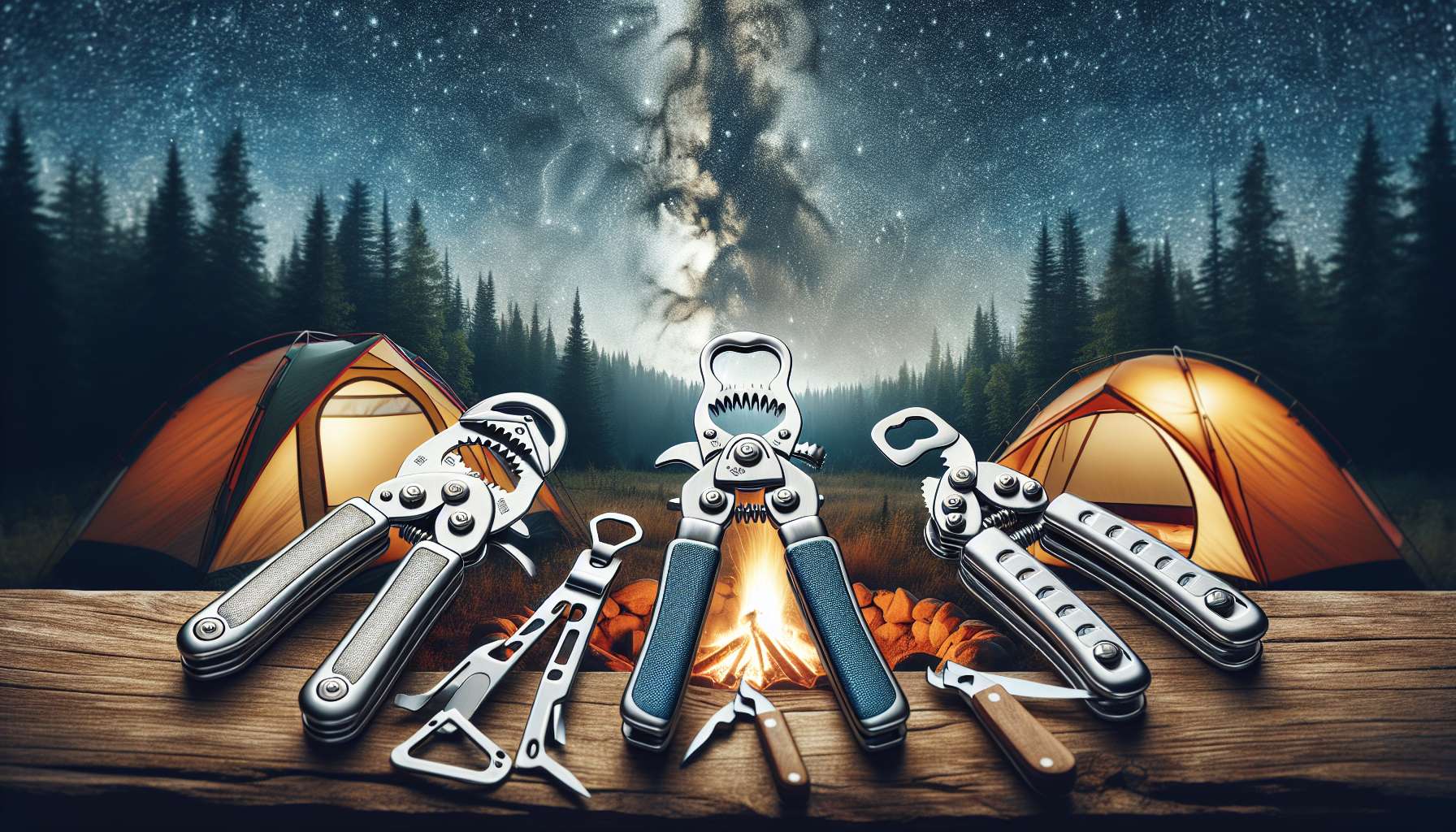The Ultimate Guide to Camping Stoves: A Comprehensive Overview
Introduction
When it comes to outdoor adventures, camping stoves play a crucial role in ensuring that you can enjoy hot meals, beverages, and even a cozy campfire under the stars. These portable cooking appliances have evolved significantly over the years, offering a wide range of options to cater to different needs and preferences. Whether you’re a seasoned outdoor enthusiast or a novice camper, understanding the ins and outs of camping stoves is essential for a successful and enjoyable trip.
Imagine being in the heart of nature, surrounded by towering trees and the symphony of wildlife, and being able to whip up a hearty breakfast or a warm cup of coffee to start your day. Camping stoves make it possible to enjoy your favorite meals even when you’re far away from the comforts of home. In this comprehensive guide, we’ll delve into the world of camping stoves, exploring their history, types, features, and everything you need to know to make an informed decision for your next outdoor excursion.
A Brief History of Camping Stoves
The concept of portable stoves dates back to ancient times when humans discovered the need for a compact and efficient way to cook food while on the move. One of the earliest known camping stoves was the “Bengal Light,” a type of portable clay stove used by travelers in India during the 19th century. These early stoves were rudimentary but served the purpose of providing a source of heat for cooking.
Fast forward to the modern era, and camping stoves have undergone significant advancements in design, technology, and fuel efficiency. From simple propane stoves to multifunctional backpacking stoves, the market is flooded with options to suit every camper’s needs. Whether you’re car camping with family and friends or embarking on a solo trek through the wilderness, there’s a camping stove out there to meet your requirements.
Types of Camping Stoves
When it comes to choosing a camping stove, there are several types to consider, each offering unique features and benefits. Let’s explore some of the most common types of camping stoves:
1. Propane Stoves
Propane stoves are popular among campers for their convenience, ease of use, and reliable performance. These stoves run on disposable propane canisters, making them ideal for car camping trips where weight and portability are not major concerns. Propane stoves are known for their fast cooking times and adjustable heat settings, allowing you to cook a variety of meals with precision.

2. Liquid Fuel Stoves
Liquid fuel stoves, such as white gas or kerosene stoves, are preferred by backpackers and mountaineers for their versatility and efficiency in extreme conditions. These stoves are designed to operate in cold temperatures and high altitudes, making them a reliable choice for adventurous expeditions. Liquid fuel stoves require priming and maintenance but offer excellent fuel efficiency and performance in challenging environments.

3. Wood Burning Stoves
Wood burning stoves are a sustainable and eco-friendly option for campers who prefer to cook using natural resources found in the wilderness. These stoves utilize twigs, sticks, and other biomass materials as fuel, eliminating the need to carry additional fuel sources. Wood burning stoves are lightweight, compact, and offer a traditional camping experience with the added benefit of reducing your carbon footprint.

4. Backpacking Stoves
Backpacking stoves are designed for minimalist campers who prioritize weight and packability. These compact stoves are ideal for long-distance treks, backpacking trips, and solo adventures where every ounce counts. Backpacking stoves come in various designs, including canister stoves, alcohol stoves, and solid fuel stoves, each offering a balance of fuel efficiency, performance, and convenience.

5. Multi-Fuel Stoves
Multi-fuel stoves are versatile options that can run on a variety of liquid fuels, such as white gas, kerosene, unleaded gasoline, and even diesel. These stoves are popular among international travelers and expeditionists who need a reliable cooking solution in remote locations where specific fuel types may not be readily available. Multi-fuel stoves are durable, efficient, and offer flexibility in fuel choices.

Choosing the Right Camping Stove
When selecting a camping stove, several factors should be taken into consideration to ensure that you choose the right option for your needs. Here are some key points to keep in mind when shopping for a camping stove:
1. Fuel Type
The type of fuel a camping stove uses will impact its performance, ease of use, and compatibility with your camping style. Consider factors such as fuel availability, cost, convenience, and environmental impact when choosing between propane, liquid fuel, wood burning, or multi-fuel stoves.
2. Cooking Style
Think about the type of meals you’ll be preparing while camping and how you prefer to cook. If you enjoy simmering, boiling, sauting, or baking, look for a stove with multiple heat settings, a stable base, and a compatible cookware size. Some stoves are better suited for quick meals, while others offer more gourmet cooking options.
3. Portability
Consider the weight, size, and packability of the camping stove, especially if you’ll be carrying it in a backpack or luggage. Backpacking stoves are designed to be lightweight and compact, while car camping stoves can be bulkier but offer more cooking power and features.
4. Durability
Choose a camping stove that is built to withstand rugged outdoor conditions, including wind, rain, and rough handling. Look for stoves made from high-quality materials, such as stainless steel, aluminum, or titanium, that are corrosion-resistant and easy to clean.
5. Budget
Determine your budget for a camping stove and compare prices across different brands and models to find the best value for your money. Keep in mind that higher-priced stoves may offer more features, better performance, and longer durability, while budget-friendly options can still provide reliable cooking capabilities.
Expert Opinions on Camping Stoves
To gain further insights into the world of camping stoves, we reached out to outdoor experts and enthusiasts for their opinions on the topic. Here’s what they had to say:
“Camping stoves have revolutionized the way we experience the great outdoors, allowing us to enjoy gourmet meals even in the most remote locations. I always recommend investing in a high-quality stove that suits your individual needs and cooking style for a memorable camping experience.” – Sarah, Outdoor Enthusiast
“As a seasoned backpacker, I rely on my lightweight backpacking stove to fuel my adventures and keep me well-fed on the trail. The right camping stove can make a significant difference in your camping comfort and convenience, so choose wisely based on your priorities.” – John, Backpacker
Common Misconceptions About Camping Stoves
There are several misconceptions surrounding camping stoves that may influence your decision-making process. Let’s debunk some common myths about camping stoves:
Myth: Camping stoves are difficult to use.
While some camping stoves may require a learning curve, most modern models are designed for easy setup and operation. Follow the manufacturer’s instructions, practice using the stove at home before your trip, and you’ll be a camping stove pro in no time.
Myth: Camping stoves are only for outdoor enthusiasts.
Camping stoves are versatile cooking appliances that can be used for picnics, tailgating, backyard BBQs, and emergency preparedness. Whether you’re a hardcore camper or a casual outdoor lover, a camping stove can come in handy in various situations.
FAQs About Camping Stoves
Here are some frequently asked questions about camping stoves to help you navigate the world of outdoor cooking:
1. Can I use a camping stove indoors?
No, it is not safe to use a camping stove indoors due to the risk of carbon monoxide poisoning and fire hazards. Always use camping stoves in well-ventilated outdoor spaces to ensure your safety.
2. How do I clean and maintain my camping stove?
Refer to the manufacturer’s instructions for cleaning and maintenance guidelines specific to your camping stove. Generally, you can wipe down the stove with a damp cloth, remove any debris or food particles, and store it in a dry and secure place when not in use.
Conclusion
To wrap things up, camping stoves are essential tools for outdoor enthusiasts, adventurers, and nature lovers who appreciate the convenience of cooking in the wilderness. Whether you’re roasting marshmallows by the campfire, brewing a hot pot of coffee at sunrise, or preparing a gourmet meal under the stars, a camping stove can elevate your camping experience to new heights.
By understanding the different types of camping stoves, choosing the right one for your needs, and following best practices for safety and maintenance, you can enjoy delicious meals and warm beverages no matter where your outdoor adventures take you. So, next time you pack your camping gear, don’t forget to bring along your trusty camping stove for a taste of home in the great outdoors!




